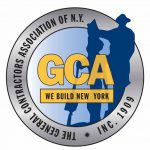Complaint Dismissed Against Defendant Joint Venturer Because Plaintiff’s Claims Are Barred By Exclusivity Provisions of Workers’ Compensation Law
published on December 31, 2011
Complaint Dismissed Against Defendant Joint Venturer Because Plaintiff’s Claims Are Barred By Exclusivity Provisions of Workers’ Compensation Law
published on December 31, 2011
In a decision dated December 12, 2011, Justice Mark Friedlander granted defendant Tully Construction Co., Inc.’s (“Tully”) pre-answer motion for summary judgment dismissing the plaintiff’s complaint sounding in common law negligence and violation of Labor Law §241(6) as against Tully. The plaintiff alleged that he sustained personal injuries on May 20, 2009, while working at a construction project at the Croton Water Filtration Plant in Bronx, New York. At the time of the accident, the plaintiff was employed by Skanska USA Civil Northeast, Inc. formerly known as Slattery Skanska Inc. (“Skanska”). Skanska had entered into a joint venture agreement, dated September 6, 2006, with Gottlieb Skanska, Inc. (now known as Skanska Mechanical and Structural Inc.) and Tully, forming the Skanska/Tully Joint Venture (“Joint Venture”), for the sole purpose of submitting a bid for, and obtaining a contract for the performance of work for the New York City Department of Environmental Protection project at the Croton Water Filtration Plant. Following the plaintiff’s accident, he filed for and accepted workers’ compensation benefits from the Joint Venture. The Court held that the documentation submitted by Tully unequivocally established that it was a part of the Joint Venture pertaining to the construction at the Croton Water Filtration Plant. The Court further cited to Appellate Division, First Department precedent holding that: “Where there is one or more employer in a joint venture, an employee working for one employer is considered an employee of the other employers in the joint venture.” Fallone v. Misericordia Hosp., 23 A.D.2d 222, 289 (1st Dep’t 1965). In light of the foregoing law and facts, the Court held that plaintiff’s complaint against defendant Tully was barred by the exclusivity provisions of the Workers’ Compensation law.
Gomes v. Tully Construction Co., Inc., Index No.: 303223/11 (Bronx Co. Sup. Ct., December 12, 2011)
John V. Fabiani, Jr. lectured at the New York State Bar Association seminar entitled “Construction Site Accidents– Direct and Cross Examination of Plaintiff–2011 Update,” in New York City.
published on December 09, 2011
John V. Fabiani, Jr. lectured at the New York State Bar Association seminar entitled “Construction Site Accidents– Direct and Cross Examination of Plaintiff–2011 Update,” in New York City.
published on December 09, 2011
Appellate Division Dismisses Action Against City Defendants and Holds that Co-Defendant Con Edison Is Exclusively Responsible for Maintaining Portion of Sidewalk Located Within 12 Inches of Con Edison’s Grates Even Though Grates Were Located on Driveway Abutting City’s School
published on November 04, 2011
Appellate Division Dismisses Action Against City Defendants and Holds that Co-Defendant Con Edison Is Exclusively Responsible for Maintaining Portion of Sidewalk Located Within 12 Inches of Con Edison’s Grates Even Though Grates Were Located on Driveway Abutting City’s School
published on November 04, 2011
In a decision dated November 1, 2011, the Appellate Division, First Department reversed the decision of the Supreme Court and granted summary judgment in favor of all City defendants leaving Consolidated Edison (“Con Edison”) the sole defendant. The plaintiff brought an action against Con Edison, the City of New York and other defendants for injuries allegedly sustained when he fell on a sidewalk on which a metal grate owned by Con Edison was situated. Although the grate was situated on a driveway abutting the City’s school, and Con Edison and the plaintiff argued that the City put it to special use, the First Department held that the City defendants were entitled to judgment as a matter of law because the evidence established that they did not have the ability to exercise control over the sidewalk defect allegedly involved. In reaching its decision, the Appellate Division relied on the facts that Con Edison owned the grate in question and, pursuant to 34 RCNY 2-07(b)(1), (2) it had an exclusive duty to maintain it, as well as the area extending 12 inches around it.
Lewis v. City of New York et al., 89 A.D.3d 410 (1st Dep’t 2011)
Court Dismisses Plaintiff’s Complaint Sounding in Common Law Negligence Against Defendants
published on October 25, 2011
Court Dismisses Plaintiff’s Complaint Sounding in Common Law Negligence Against Defendants
published on October 25, 2011
In a decision dated September 26, 2011, Justice Debra A. James granted the defendants City of New York (“the City”) and Skanska USA Civil Northeast Inc.’s (“Skanska”) motion for summary judgment dismissing the plaintiff’s complaint sounding in common law negligence against them. The Metropolitan Transportation Authority awarded Skanska the contract for a project that required the closure and removal of a certain portion of the sidewalk on the east side of Church Street in New York City and the rerouting of pedestrians into a temporary, barricaded walkway. The plaintiff allegedly tripped on a manhole cover while walking in the temporary walkway. The evidence established that the manhole cover was owned by third-party defendant, Empire City Subway Company. The Supreme Court held that because neither the City nor Skanska owned the manhole cover and because the manhole cover was not within the construction site, the City and Skanska could not be held liable to the plaintiff for her alleged injures. Alternatively, the plaintiff had argued that the City and Skanska created the alleged condition by placing a temporary walkway over the allegedly broken and defective roadway in the area of the manhole cover. However, the Supreme Court found that the plaintiff did not meet her burden of proving that the City or Skanska performed any work on the roadway in the vicinity of the manhole cover at any time immediately preceding the date of the accident and/or otherwise caused the alleged condition.
Barrett v. City of New York et al., Index No.: 405347/07 (N.Y. Co. Sup. Ct., September 20, 2011)
Appellate Division Dismisses Plaintiff’s Causes of Action Against the City for Common Law Negligence and Pursuant to Labor Law §§200 & 241(6)
published on October 07, 2011
Appellate Division Dismisses Plaintiff’s Causes of Action Against the City for Common Law Negligence and Pursuant to Labor Law §§200 & 241(6)
published on October 07, 2011
In a decision dated August 23, 2011, the Second Department reversed the decision of the Supreme Court insofar as it denied the City’s motion for summary judgment seeking dismissal of the plaintiff’s causes of action for common law negligence and pursuant to Labor Law §§200 and 241(6). The Supreme Court had previously dismissed the plaintiff’s cause of action pursuant to Labor Law §240(1) so it was not an issue on appeal. The plaintiff, a union steward employed by a general contractor at the Hunts Point Water Pollution Control Plant, was allegedly injured when he stepped on a wooden ramp while alighting from his truck. According to the plaintiff, the ramp separated underneath his feet, causing him to fall to the ground. The Appellate Division held that the plaintiff’s causes of action for common law negligence and pursuant to Labor Law §200 should have been dismissed because the defendants did not supervise, direct or control the plaintiff’s work or have notice of the condition. The plaintiff’s own testimony established that the condition was not visible and apparent. The Court further held that the plaintiff’s the Labor Law §241(6) claim should have been dismissed because it was predicated upon an alleged violation of Industrial Code Rule 23-1.22(b)(2) which was inapplicable to the facts of the case.
Gray v. City of New York et al., 87 A.D.3d 679 (2d Dep’t 2011)
John V. Fabiani, Jr., Thomas J. Hall and Christopher R. Toppo lectured for Chartis Insurance, Axis Insurance Group, ACE Insurance and Fleming & Hall at a seminar entitled “The Art of Effective Risk Transfer,” in Alpharetta, Georgia.
published on July 20, 2011
John V. Fabiani, Jr., Thomas J. Hall and Christopher R. Toppo lectured for Chartis Insurance, Axis Insurance Group, ACE Insurance and Fleming & Hall at a seminar entitled “The Art of Effective Risk Transfer,” in Alpharetta, Georgia.
published on July 20, 2011
John V. Fabiani, Jr. and Stephen M. Cohen lectured at a Travelers Insurance Company seminar entitled “Defending Damages On Spinal and TBI Claims,” in Windsor, Connecticut.
published on June 22, 2011
John V. Fabiani, Jr. and Stephen M. Cohen lectured at a Travelers Insurance Company seminar entitled “Defending Damages On Spinal and TBI Claims,” in Windsor, Connecticut.
published on June 22, 2011
Court Grants Defendant City of New York Summary Judgment Dismissing Plaintiff’s Complaint
published on June 15, 2011
Court Grants Defendant City of New York Summary Judgment Dismissing Plaintiff’s Complaint
published on June 15, 2011
In a decision dated June 15, 2011, Justice David B. Vaughan granted the defendant City of New York summary judgment dismissing the plaintiff’s complaint which alleged that the City was negligent and violated Labor Law §§200, 240(1) and 241(6). The plaintiff, an ironworker, was allegedly injured while working for his employer at a project located on the lower roadway of the Manhattan Bridge owned by the City. At the time of the accident, the plaintiff was standing on a steel box girder that was being lowered by a mobile crane when a “come-along” failed causing the girder to shake and the come-along’s chain to strike him in the right leg. The court granted the City’s motion for summary judgment dismissing the common law negligence and Labor Law §200 causes of action because the plaintiff’s work was supervised, directed and controlled by his employer and no one else. The cause of action pursuant to Labor Law §240(1) was dismissed because the plaintiff was not exposed to an elevation-related risk and a violation of the statute was not a proximate cause of his accident. Lastly, the court dismissed the cause of action pursuant to Labor Law §241(6) because the alleged Industrial Code Rules which served as a prerequisite to the §241(6) claim were either too general, inapplicable to the facts of the case, not violated and/or were not the proximate cause of the plaintiff’s accident.
O’Brien v. The City of New York, Index No.: 46072/07 (Kings Co. Sup. Ct., June 15, 2011)
Court Grants Defendant Building Owner Summary Judgment Dismissing Plaintiff’s Complaint
published on June 11, 2011
Court Grants Defendant Building Owner Summary Judgment Dismissing Plaintiff’s Complaint
published on June 11, 2011
In a decision dated May 31, 2001, Justice May Ann Brigantti-Hughes granted the defendant building owner (“general contractor”) summary judgment dismissing the plaintiff’s complaint in its entirety. The plaintiff was a security guard who worked at a property located at 744 East 168th Street, Bronx, New York. On the night of November 3, 2003, he was performing a vertical check of the property to ensure that it was secure. While doing so, he allegedly slipped and fell on or near a paper bag on a staircase, which was dripping with oil and creating a slippery condition located between the fifth and sixth floors of the building. The defendant moved for summary judgment alleging that it had no actual or constructive notice of the alleged condition. The court agreed and held that there was simply no evidence in this matter demonstrating the length of time an oily bag was left on the staircase in order to establish that the defendant had constructive notice of this allegedly hazardous condition.
Brown v. The City of New York and Parrocks Associates, Index No.: 7159/05 (Bronx Co. Sup. Ct., May 31, 2011)
Defendant Safety Auditing Services Joint Venture Obtains Voluntary Discontinuance of Plaintiff’s Complaint and All Cross-Claims
published on May 31, 2011
Defendant Safety Auditing Services Joint Venture Obtains Voluntary Discontinuance of Plaintiff’s Complaint and All Cross-Claims
published on May 31, 2011
The plaintiff claims that he sustained bodily injuries on November 8, 2005, at a construction and renovation project at the Newtown Creek Water Pollution Control Plant. During the course of his employment with Pegno/Tully Joint Venture, the plaintiff, while carrying a heavy metal doorframe, stepped on an open sewer drain in the basement of the “Grit Building” at the project. Prior to the plaintiff’s accident, Tams/Allied Joint Venture (“Joint Venture”) entered into an agreement with the New York City Department of Environmental Protection (“DEP”) to perform third-party occupational safety auditing services at various DEP projects, including the subject project. The duties of the Joint Venture at the project consisted of randomly visiting the project and physically observing site conditions in the presence of the contractor site safety representative. If any unsafe work practices or conditions were observed, the Joint Venture recorded the same in a database and discussed the issue with the appropriate DEP and contract management resident engineering staff as well as the contractor’s site safety representative. The Joint Venture did not have the authority to instruct any of the contractors or subcontractors on the site as to the means and methods of their work; nor did it have the authority to stop any of the contractors or subcontractors from performing their work. Significantly, it did not have any duty or responsibility to implement safety standards or to provide safety devices. In light of the foregoing, the Joint Venture successfully obtained a voluntary discontinuance of the plaintiff’s complaint alleging that the Joint Venture was negligent and violated Labor Law §§200, 240(1) and 241(6). The cross-claims interposed by the various codefendants were also voluntarily discontinued as against the Joint Venture.
Ingordo v. WDF, Inc. et al., Index No.: 42646/07 (Kings Co. Sup. Ct.)








